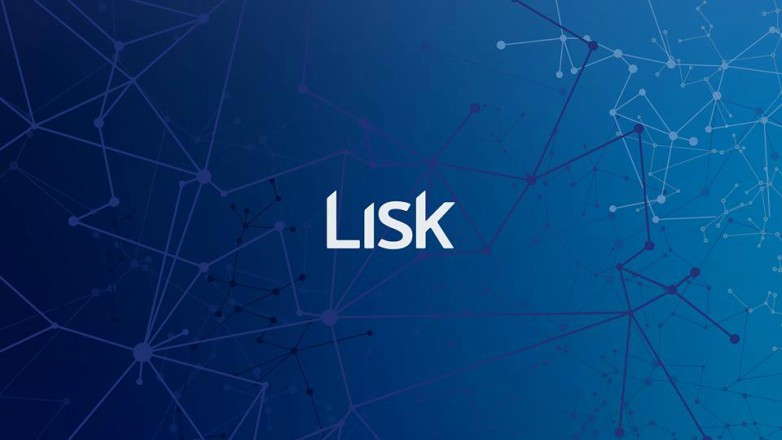Lisk (LSK) has been extremely active since its ICO this spring and was set to unveil an official rebrand in Q4 2017. It was just announced at their Berlin meetup that the date has been pushed back to February 20, 2018. This highly anticipated news has left some in the community disappointed, but others welcome it as evidence that the company is doing things right.
Before we dig into more specifics let’s go over some basics. Lisk is a cousin to Ethereum and to date has created a lot of noise. But why specifically should a crypto-enthusiast care about this rebrand?
There are 2 reasons:
- Rebrandings are often associated with an increase in value. To cite one example, when AntShares were rebranded to NEO, the price went from single digits to well into the 40s. Lisk is unlikely to replicate this but the odds of increased price pressure appears high.
- The marketing push of the rebrand should bring with it a wave of JavaScript developers into the blockchain/crypto space. More developers mean more common use case Dapps, and in general greater cryptocurrency adoption.
To start we’ve provided some general context. For many people this will be a review, so feel free to skip ahead as you see fit.
A Brief History of Lisk
Lisk came into being when it forked away from Crypti in early 2016, and since its inception, there has been some confusion as to what exactly it is and what it’s for. There are various reasons for this – early advertising tactics to various crypto communities, being a little bit slow to release a whitepaper, etc.
The company itself has worked to dispel the confusion, most notably this blog post by co-founder Max Kordek (among other things).
When someone says “Lisk”, they could be referring to any or all of the following:
- Lisk, a decentralized network such as Bitcoin, Nxt, or BitShares that uses Delegated Proof of Stake or DPoS.
- Lisk, a cryptocurrency with a token called LSK, with a current market cap of over a billion dollars.
- Lisk, a framework written in Java to deploy sidechains and develop blockchain applications on top of them.
Lisk has often been compared to or confused with Ethereum. The reason? Both try to provide a platform for a similar idea: decentralized applications.
Wikipedia has clearly laid out some of the major differences:
- Lisk uses DPoS, while Ethereum currently uses Proof of Work (PoW).
- They use different languages: Lisk uses Javascript, while Ethereum currently uses Solidity.
- They have different locations for applications: Lisk uses sidechains, while Ethereum currently stores on the main chain.
One of the primary values of the LSK platform is providing Java developers a smooth entry point into the world of blockchain technology.
In early 2017, Lisk announced that they had partnered with renowned Berlin-based design agency Taikonauten to overhaul their brand. Here, we specifically discuss their rebrand update. For a closer look at what’s going generally on at Lisk, check out this article.
Related: What is Lisk?
Looking into the Future
For any company (or technology) in its infancy, identity and positioning are issues of paramount importance. Lisk recognized this and it’s largely why the rebrand was undertaken.
It will reportedly address all of the following:
- The logo
- The website
- The blockchain explorer
- The client-user interface
In addition to this, Taikonauten is doing a ground-up rebuild of Lisk’s corporate design and media kit. At the same time, the Lisk team is working hard to mold a more elegant core system, develop a better Lisk Software Development Kit (SDK), add more useful features, and continue to put an emphasis on security.
The SDK, in particular, is important because this is the tool that will allow other developers to innovate and build applications onto chains, next to the main Lisk chain.
To date, Lisk has focused their energy on the backend, but the rebrand in general marks a shift toward more visible changes in the existing ecosystem. The end result will be a visually unified ecosystem and an improved UX – paving the way for the “common user”.
Approximate Timeline
The work with Taikonauten was slated to run from March until August 2017, and there has been quite a bit of speculation since then as to when exactly things would be completed. Here is a bird’s eye timeline of the project:

Glance at the graphic above and two things immediately become clear. One, that a lot of groundwork was laid before Taikonauten stepped in. Two, we’ve almost reached the end of the timeline.
Initially, Lisk partnered with Rlevance, a world-famous brand strategy consulting firm who’ve worked with the likes of Microsoft and Mercedes Benz. The market research was conducted at the front end of the timeline and included a careful examination of Lisk’s business model, strategy workshops and interviews with numerous blockchain experts. The result is a clear understanding of the market, a distillation of Lisk’s significance and a unique positioning strategy.
This is the foundation upon which Taikonauten began designing.
With the question when at a boiling point, Lisk hosted a meetup in Berlin on November 22. Over 150 attendees packed into a co-working space and more than 17,000 people viewed the livestream on YouTube.

(Source: Lisk FB)
One of the biggest pieces of news delivered was that the rebrand launch was pushed back three months.
Founder Kordek addressed things head on. “Now you’re probably sitting there wondering why the #*%@ does it take a year?” he continued, “along the way we were not only adding more pages, more detail, more content than originally planned but we also focused on every single step and really focused on quality.” He went on to cite an example where the team scratched three weeks of work on a design theme because it wasn’t quite “right”.
He also mentioned that Lisk hired an additional marketing consultancy from the Netherlands called Expand Online, who were brought in to “push hard on other aspects of the launch such as analytics and SEO”. Another positive step, but a further cause of delay.
This segment of the talk had a big injection of optimism toward the end: “when we do launch it’s going to be very professional, a big party like an Apple keynote!” To hear Kordek’s full rebrand remarks you can watch the raw video (starts at 1h 31m mark).
A Growing Team
As the rebrand is churning along and the strategy is being refined, the Lisk team is growing. In September and October, they announced that 10+ new hires had been brought on board, bringing the team to around 25 people with 14 different nationalities.

(Source: Lisk Blog)
The marketing team has also grown in ranks, adding five people, with additional vacancies listed on the site. The project has also been quite active in reaching out to its community with meetups that always fill up. At the meetup in Berlin, Kordek also mentioned numerous open positions including front-end and backend quality assurance (QA) testers and a software architect.
There has also been an expansion of the Lisk ambassador program. Historically, Lisk only had dedicated ambassadors but now anyone in the community can apply. This signals an effort to move away from centralized control and encourage grassroots level growth.
Conclusion
The news of a later launch has left some people discouraged and the market reacted predictably. Debate erupted on the Lisk subreddit but more than a few users seemed to notice a silver lining.
The original ideological promise of the Lisk platform – to increase the scalability and accessibility of blockchain technology – remains, and this pushback can be seen as a dedication to quality at the expense of speed. Lisk is not pushing something out the door just for the sake of doing so.
From this vantage point, the rebrand news (and subsequent price drop) is a windfall and an opportunity to buy up more tokens. While a lot of questions remain unanswered, one thing is certain, come February all eyes will be on Lisk.
For up-to-date information on Lisk, visit their blog. You can also connect with them on Twitter and Facebook, and join their Reddit community.

